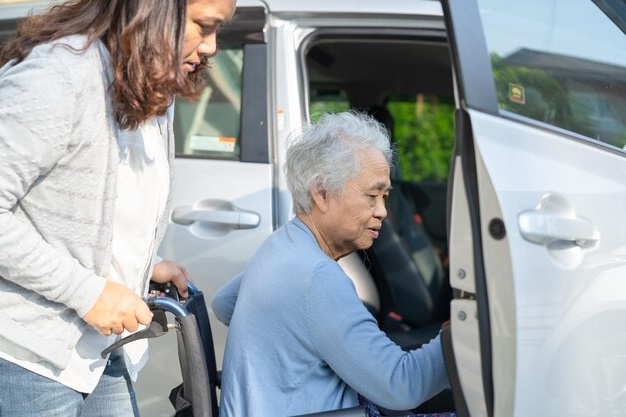Addressing Unaffordable and Unreliable Transportation for Seniors

Aging in place, or the ability for seniors to live in their own homes and communities as they age, is a goal for many older adults. It fosters independence, comfort, and a sense of belonging. However, there are several obstacles that can make aging in place challenging, with transportation being one of the most significant. Lack of access to reliable and affordable transportation can leave seniors feeling isolated and hinder their ability to participate in daily activities and maintain their well-being. Let us explore this barrier and discuss potential solutions to help seniors live more freely and confidently at home.
The Transportation Challenge for Seniors
- Unaffordable Transportation Options:
- Cost of Ridesharing Services: While ridesharing apps such as Uber and Lyft offer convenience, they can quickly become costly, particularly for seniors on fixed incomes. Frequent trips for grocery shopping, medical appointments, and social engagements may become financially unsustainable.
- Limited Public Transportation Discounts: Although some municipalities offer reduced fares for seniors, public options may not always be cost-effective or accessible to everyone. Long distances between bus stops or train stations and limited route coverage can pose additional challenges.
- Maintenance Costs of Personal Vehicles: Seniors who drive themselves often encounter increasing maintenance costs, insurance premiums, and, in some cases, expenses for vehicle modifications to accommodate physical limitations. These financial burdens can make car ownership unrealistic.
- Unreliable Transportation Services:
- Limited Availability of Specialized Services: Non-emergency medical transportation (NEMT) and paratransit services are intended to help seniors get to important medical appointments and other necessary destinations. However, these services may have limited hours of operation, long wait times, and unreliable scheduling.
- Infrequent and Inconsistent Public Transit Schedules: Even in areas with public transit options, bus and train schedules may be inconsistent or infrequent. Seniors who need to adhere to strict appointment times or who struggle with mobility may find public transportation unreliable.
- Service Gaps in Rural Areas: Seniors in rural areas often face compound challenges due to a lack of public transportation and fewer ride sharing services. Without accessible options, these individuals may be isolated from necessary resources.
Addressing the Barriers: Solutions for Seniors’ Transportation Needs
- Community-Based Transportation Programs: Local governments and non-profits can collaborate to create senior-focused transportation services. Volunteer driver programs, ride-sharing partnerships tailored for older adults, and subsidized taxi programs can help seniors access necessary destinations without breaking the bank.
- Improving Public Transit Accessibility: Municipalities can invest in better public transportation infrastructure, focusing on increased frequency of service, accessible vehicles, and user-friendly routes for seniors. Improvements like clearer signage, designated seating, and reduced wait times can make public transit more appealing and dependable.
- Leveraging Technology to Bridge Gaps: User-friendly apps tailored to senior needs can provide real-time updates on transportation availability and reliability, reducing uncertainty. Training seniors to use such technology, through community workshops, can empower them to access convenient transportation solutions more easily.
- Collaborative Care Models: Health and social service providers, including Evergreen Nursing Health, can play a critical role in arranging transportation for clients. Personalized care plans can incorporate scheduled trips for appointments, social outings, and errands to promote a healthy and independent lifestyle.
- Exploring Subsidies and Financial Assistance: Encouraging local governments to offer more subsidies or expand existing programs for seniors’ transportation needs can make a significant impact. Partnerships between healthcare organizations, insurance providers, and government agencies could facilitate financial assistance for essential travel.
Transportation is a critical aspect of aging in place, as it affects every dimension of seniors’ lives, from healthcare access to social connectedness. Overcoming the barriers of unaffordable and unreliable transportation requires a collaborative, innovative approach. By prioritizing the development of affordable, accessible, and dependable options, we can help seniors maintain their independence, health, and quality of life in their own communities.
Diana Nelsen, RN BSN
Are you looking to secure either of these services? Schedule a free consultation with our expert nurses today!

